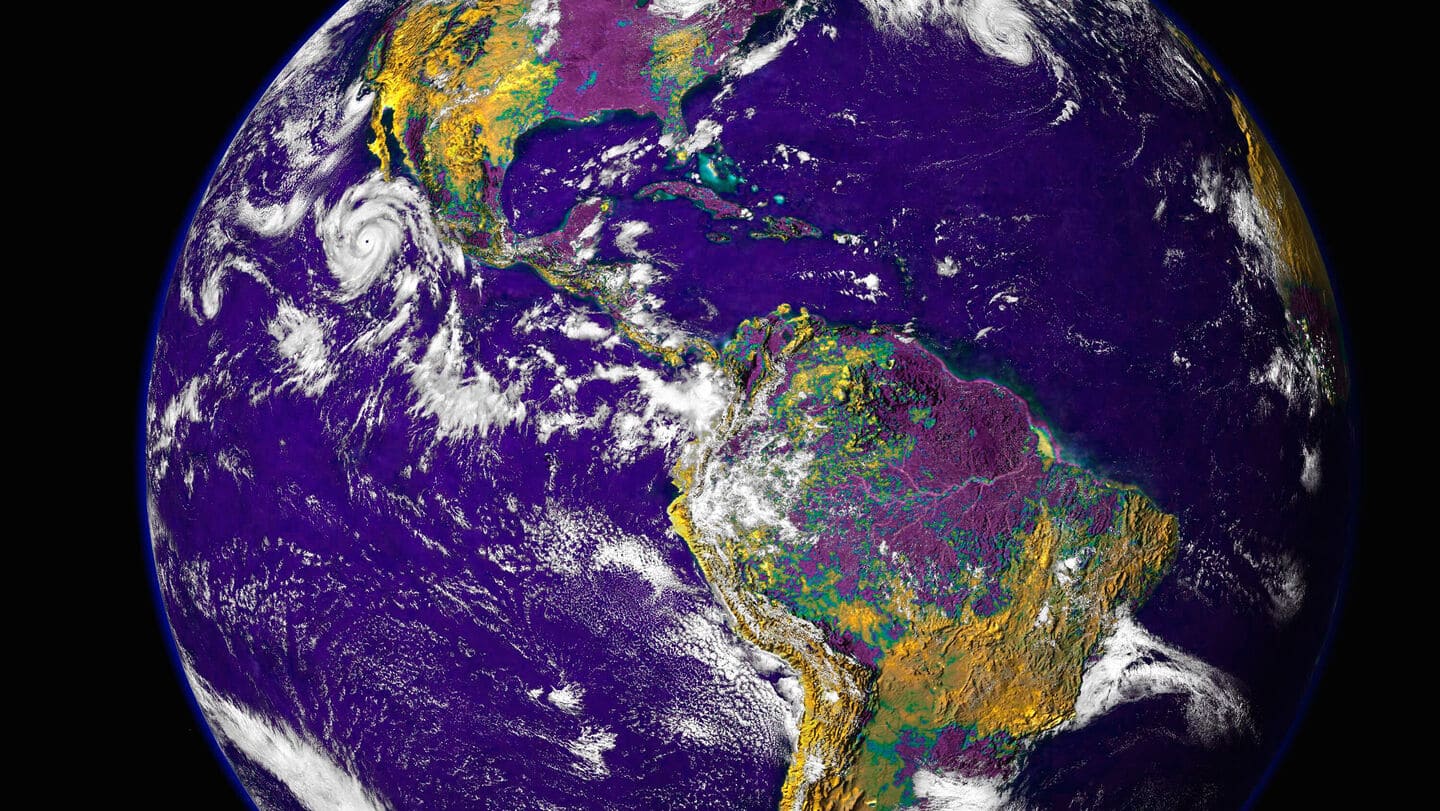
Why Earth might once have looked like a purple marble
What's the story
Our planet, the blue marble of the universe, may have once been a different color altogether. According to some scientists, Earth was once dominated by purple and pink hues. The theory was first proposed by Indian-American molecular biologist Shiladitya DasSarma and is known as the "Purple Earth Hypothesis." It suggests that early life forms on our planet didn't rely on chlorophyll but a molecule called retinal.
Color theory
Retinal and purple halobacteria
Retinal, a molecule still found in nature, is present in the plum-colored membrane of a photosynthetic microbe called halobacteria. This bacterium absorbs green light and reflects red and violet light, creating a purple appearance. According to DasSarma's theory, primitive microbes using retinal to harness solar energy were dominant on early Earth, giving it a purple hue.
Survival strategies
How did chlorophyll survive?
William Sparks, an astronomer at the Space Telescope Science Institute (STScI) in Maryland, who assisted DasSarma with his research, explained how chlorophyll adapted to survive. He said that "Chlorophyll was forced to make use of the blue and red light since all the green light was absorbed by purple membrane-containing organisms." This adaptation helped chlorophyll-based organisms survive in a world dominated by retinal-using microbes.
Bacterial influence
Earth was a 'pink planet' over 650M years ago
Over 650 million years ago, cyanobacteria ruled Earth's oceans. These bacteria are believed to have contributed to the pinkish hue of our planet, making it a "pink planet." Fossilized remains of these bacteria with ancient chlorophyll have been found in concentrated form. Scientists believe that when mixed with water, these remains released a pink color, further adding to the theory of a pink Earth.